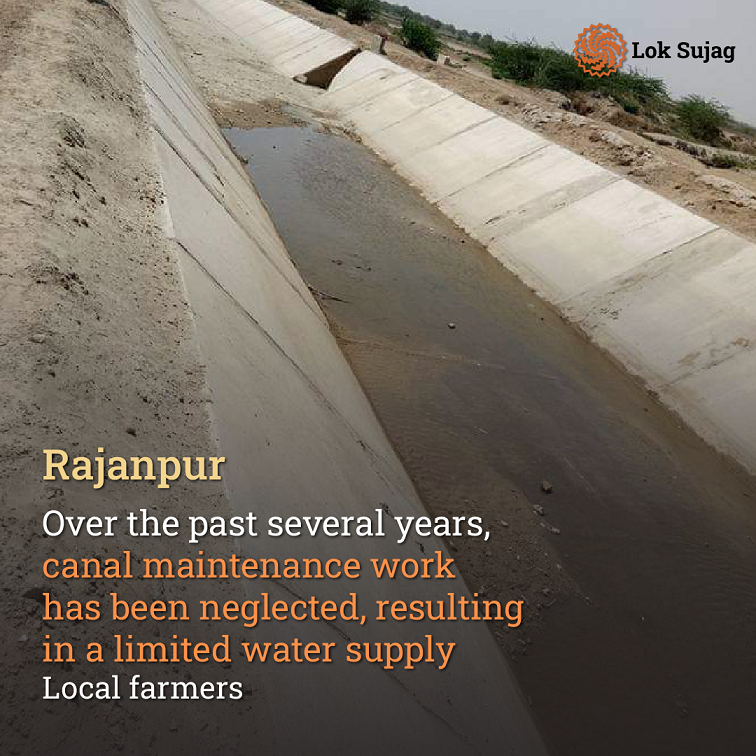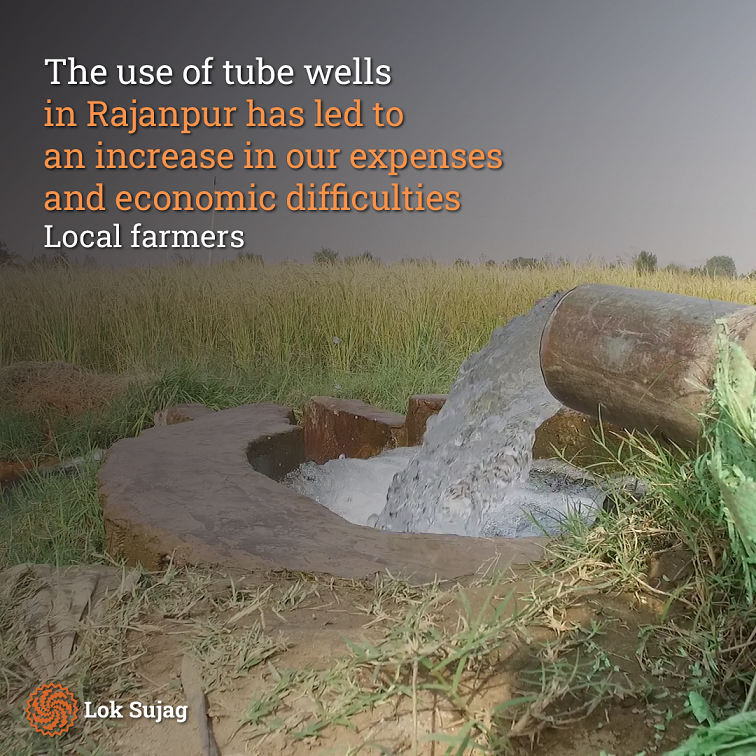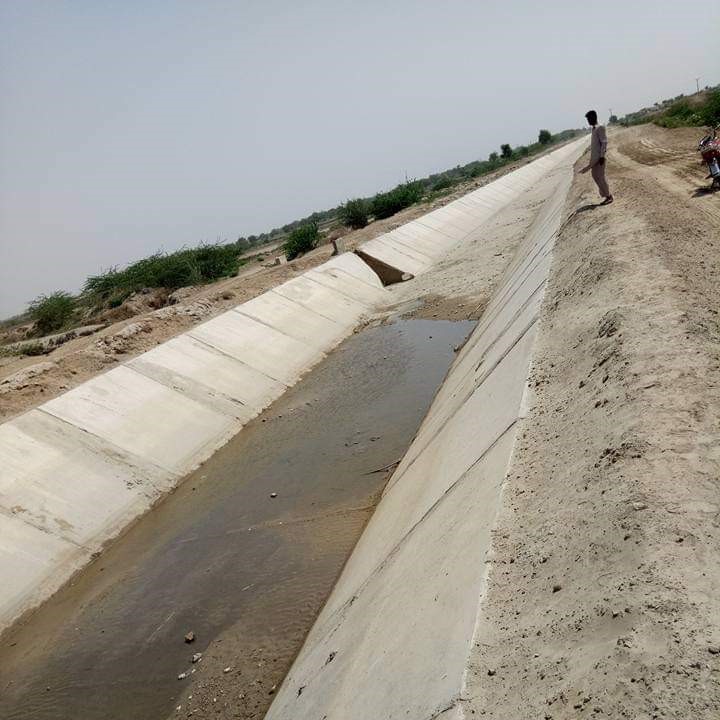Most of Rajanpur’s agriculture relies on canal water. The district is irrigated by two canals, Dajal and Jampur Link 3. Both are the branches of the Dera Ghazi Khan Canal coming out of the Taunsa Barrage. Seventeen more connecting channels originate from these two canals in Rajanpur. The floods due to Rod Kohi also continually collide with Rajanpur’s canals, due to which they need repair. Farmers of the area complain that the dilapidated canals are not being repaired and water has been supplied in less quantity for the past few years. Besides, canal water is not available in time.
Qutb Canal is one of those near which Abdul Ghaffar, a farmer, says he grows rice and wheat every year. He used to irrigate his crops with canal water, but now, due to the unavailability of canal water, he has to supply water to crops using tube wells.
He says there has been no water in the Fazil Canal, Qadra Canal, Chhachhar Canal, Hazoori Canal, Miranpur Canal, and Qutb Canal for the past three years during the period of need.

“I am a poor farmer. The use of tube wells has increased my expenses and financial problems. When the crop is ready and there is no need for water, water enters the canal. Due to the weak embankment of the canal, water seeps into the crops and spoils them. To avoid losses, I didn’t cultivate any crops this time.”
According to a report from the Punjab Agriculture Department, in the district of Rajanpur, which covers an area of 18,69,337 acres, the majority of the land, approximately 9,53,105 acres, is used for cultivating crops like wheat, cotton, sugarcane, and rice. These crops require canal water.
Abdul Rahman from the village of Bhatta near the Fazil Canal mentions that the wheat crop is grown from November to April, and during these months, in some areas, canola is also cultivated.
Similarly, from May to October, cotton is grown, and crops like sugarcane, maise, and barley are also cultivated during this period.

He is disappointed by the scarcity of canal water and a lack of water during the crop seasons. He mentions that the condition of the Fazil Canal is similar to that of the Qutub Canal, “When farmers do not require water, it is released into the canal. Due to the untimely supply of canal water, crop yields in the area have decreased significantly.”
Most of Fazilpur, Miraanpur, Bambli and Rojhan have been affected due to lack of canal water.
Also Read

The fate of Nara Canal: Dwindling waters, vanishing agriculture, and shifting lives in Sindh's heartland
Mohammad Aqeel, a concerned officer of the Deputy Commissioner Office Rajanpur, says that orders have been given to the irrigation department to take steps to repair such canals whose embankments are weak. “Most of the canals that were damaged during the flood are undergoing maintenance projects, and soon, the canal system will be improved.”
In this regard, Abdul Rauf, the Executive engineer at the Irrigation Department, states that the department has an allocation of 170 million rupees for the maintenance of canals. He says these funds were not released due to political uncertainties, challenging the canal maintenance work. Now, the department has been provided with funds and is working to improve the dilapidated condition of the canals.
According to agricultural expert Touqeer Qadir, there has been a decrease in canal water by up to 60 per cent during this period. Canal breaches and water scarcity have created difficulties for farmers who complain that they are compelled to irrigate their lands through tube wells due to reduced availability of water. Thus, their costs have increased, and profits have decreased.
Published on 13 Oct 2023



















